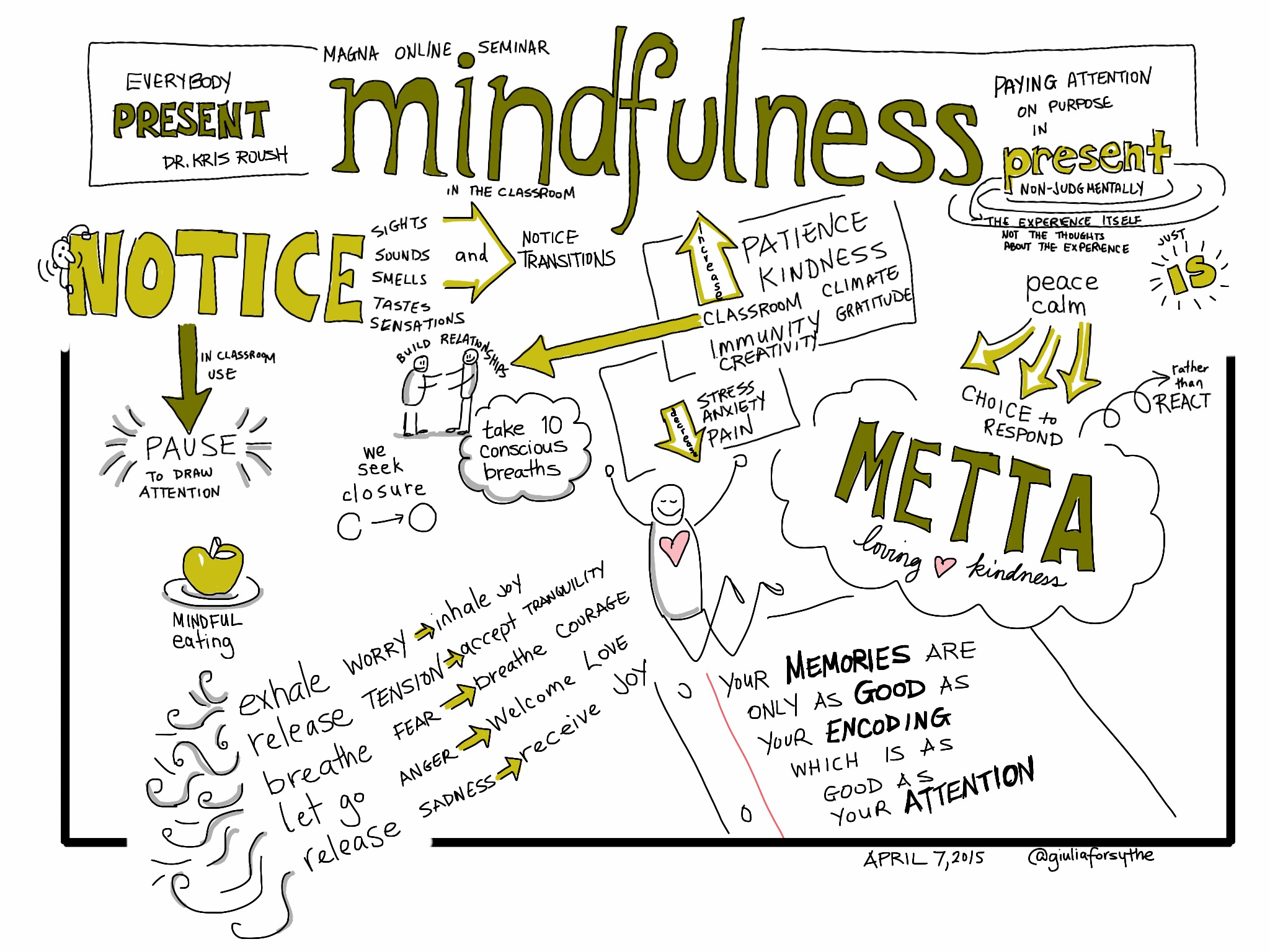Mindfulness is all the rage. Corporations like Goldman Sachs and Monsanto teach it to employees. The meditation apps Calm and Headspace have both been valued at $250 million. Forbes recently profiled six “tech entrepreneurs” who “want to bring mindfulness to your sex life.”
But what exactly is it?—many people continue to ask.
To meditation teacher Hugh Byrne, it’s seeing whatever is arising in our experience like clouds moving through the sky—including sensations, feelings, emotions, thoughts, sounds, the breath. They come and go.
To scientist Jon Kabat-Zinn, it’s “going beyond or behind our thinking,” like standing behind a waterfall. “We still see and hear the water, but we are out of the torrent [of thoughts.]”
To Zen Buddhist teacher angel Kyodo willliams, it’s like sifting through “that drawer that collects everything in your house. We have no real way of being able to discern what is mine, what is yours, what are we holding collectively, what have I inherited, what have I taken on as a measure of protection, of a way to cope at some point in my life or past lives, that I no longer need? [Mindfulness] lets us begin to do that.”
To the Tibetan Buddhist monk Yongey Mingyur Rinpoche, it’s like inviting guests into your home. He tells a story of being a sick teenager on a bus. “I [meditated,] bringing my awareness to the sensations around my stomach, its bloating, and the nausea. I was playing host to these sensations, as well as to feelings of aversion, resistance, and reaction. The more I allowed these guests to inhabit my body, the calmer I became.”
To some Mahayana Buddhists, it’s also known as “Buddha nature,” which is like “a treasure hidden beneath the house of a poor family. The treasure is silent and so cannot announce its presence, yet when it is discovered poverty is dispelled.”
To the ancient Zen master Dogen, it’s a mirror: “The real way circulates everywhere; how could it require practice or enlightenment? The essential teaching is fully available; how could effort be necessary? Furthermore, the entire mirror is free of dust; why take steps to polish it? Nothing is separate from this very place; why journey away?”
I like to think of it as seeing a movie in a theater. Most of the time—when we’re not mindful—we’re sitting in the front row, engrossed in what’s on the screen (our thoughts). There’s no space, no gap between our thoughts and consciousness, the thinker of those thoughts. Mindfulness is walking to the back of the theater and realized that here’s a screen and an audience.
What emerges from these metaphors is a (somewhat) simple definition: mindfulness is being aware of what’s happening in the present moment, including thoughts, in a non-judgmental way.
Free meditation cheat sheet
I’ve come up with a cheat sheet to help you start and stick with a regular meditation practice. Get it for free here.
Listen to my podcast Meditation for the 99%
On Meditation for the 99%, I take meditation out of faraway monasteries,expensive retreat centers, and Corporate America, and bring it to work, relationships, and, especially, politics. Listen everywhere podcasts are available.
